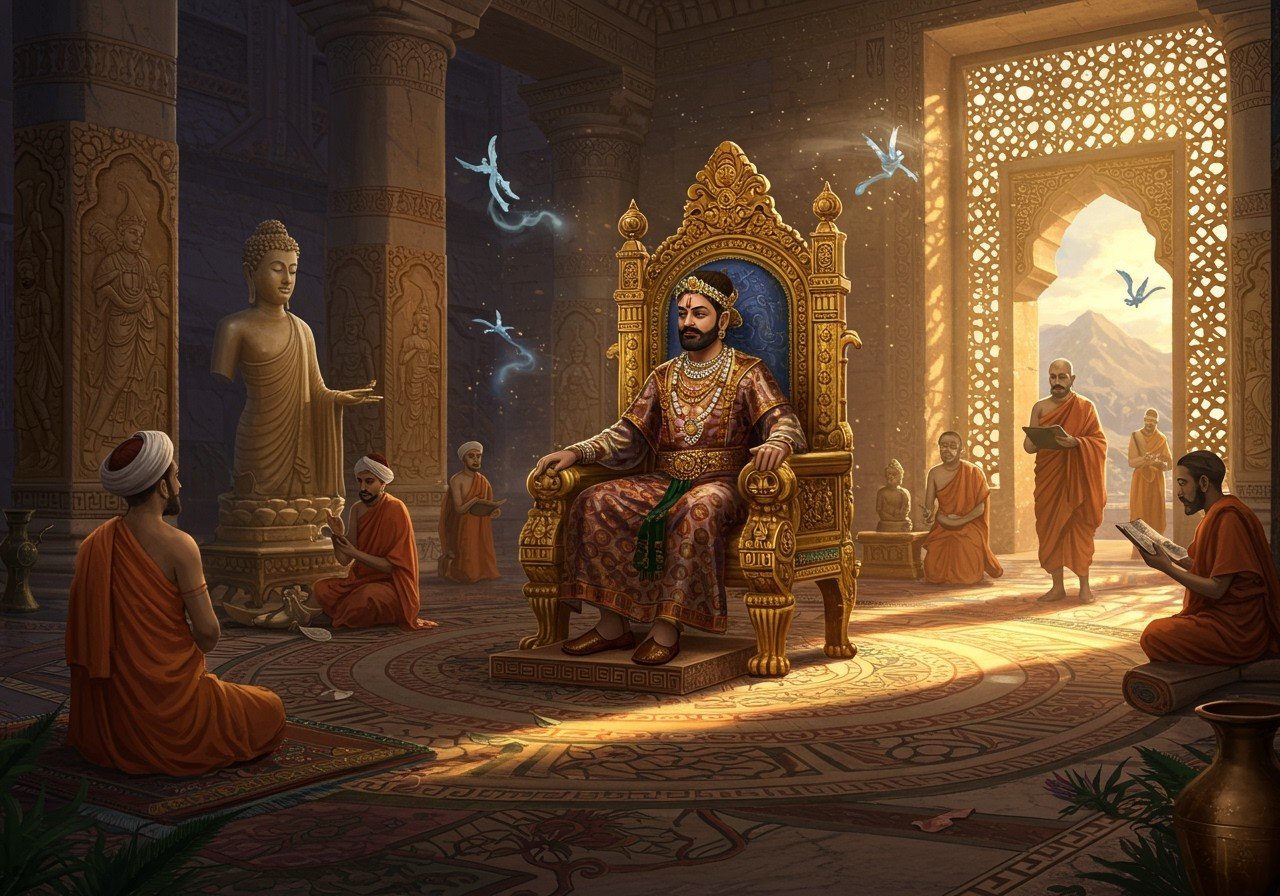
The Kushan Empire, flourishing between the 1st and 4th centuries CE across regions now encompassing Central Asia, northern India, Pakistan, and Afghanistan, stands as a testament to a vibrant cultural and artistic fusion. This era witnessed a dynamic interplay of influences, blending the Greco-Buddhist art of Gandhara with the indigenous Indian art of Mathura. The result was a unique artistic landscape, marked by the first representations of the Buddha in human form and significant advancements in sculpture and architecture, particularly within the Gandhara School, which harmoniously combined Greek, Roman, and Buddhist styles.
Origins and Expansion
Emerging as one of the five branches of the Yuezhi confederation, the Kushan Empire solidified its power under Kujula Kadphises, unifying the Yuezhi and establishing the Kushan dynasty. Subsequent leaders, including Vima Kadphises and Kanishka the Great, spearheaded the empire’s expansion, extending its reach from the Ganges plain to Central Asia. This strategic control over vital trade routes, particularly along the Silk Road, fostered economic prosperity and facilitated a dynamic exchange of cultural ideas and artistic traditions.
- Beginnings: The Kushan dynasty originated from the Yuezhi confederation, a group of nomadic people from Central Asia. Over time, they consolidated their power and established a formidable empire.
- Key Leaders: Kujula Kadphises laid the foundation, while Vima Kadphises and Kanishka the Great further expanded the empire’s reach and influence, leaving a lasting mark on the political landscape.
- Trade Routes: The Kushan Empire’s control over key segments of the Silk Road played a pivotal role in their economic and cultural development. This control facilitated trade and cultural exchange between East and West.
The empire’s dominance in trade positioned it as a crucial conduit for the transmission of goods, ideas, and artistic styles across vast geographical distances.
Kushan Art: A Tapestry of Influences
Kushan art stands as a testament to the empire’s diverse cultural influences, blending elements from various traditions. The Gandhara style, a prominent artistic expression of the era, seamlessly integrated Greco-Roman techniques with Buddhist themes, resulting in the creation of iconic Buddha sculptures. Meanwhile, the Mathura school, rooted in indigenous Indian traditions, focused on red sandstone sculptures depicting Hindu, Buddhist, and Jain deities. This artistic diversity reflected the empire’s inclusive religious landscape.
- Gandhara Style: Characterized by the fusion of Greco-Roman artistic techniques with Buddhist themes, the Gandhara style produced distinctive Buddha sculptures, often depicting him in human form with Hellenistic features. This style played a crucial role in the visual representation of Buddhist concepts.
- Mathura School: The Mathura school, using red sandstone as its primary medium, created sculptures of various deities, reflecting the religious diversity of the Kushan Empire. This style showcased indigenous Indian artistic traditions and contributed significantly to the development of religious iconography.
- Coinage: Kushan coinage served as a canvas for artistic expression and religious representation. Coins often featured Greek, Indian, and Zoroastrian symbols, reflecting the empire’s cosmopolitan nature and the diverse religious beliefs that coexisted within its borders.
Architectural marvels from this period, including stupas and monasteries like Takht-i-Bahi, showcase the Kushan Empire’s architectural prowess. The influence of Kushan art extended to subsequent Indian dynasties, notably the Guptas, demonstrating its lasting impact on artistic traditions in the region.
Religion in the Kushan Empire: A Melting Pot of Beliefs
The Kushan Empire was characterized by a remarkable degree of religious syncretism. Under the reign of Kanishka the Great, Buddhism experienced a period of significant flourishing, marked by the convening of the Fourth Buddhist Council at Kundalvana. Buddhist monasteries and stupas became vital centers of religious and cultural activity.
- Buddhism: Kanishka the Great’s patronage played a crucial role in the flourishing of Buddhism during the Kushan era. His support led to the construction of numerous monasteries and stupas, which served as centers for Buddhist learning and practice.
- Other Religions: While Buddhism thrived under Kushan rule, other religions, including Hinduism, Zoroastrianism, and Hellenistic cults, also coexisted within the empire. This religious diversity is reflected in the art and iconography of the period.
- Coinage: The Kushan coinage provides further evidence of the empire’s religious diversity. Coins often depicted deities from various religious traditions, showcasing the Kushans’ inclusive approach to religious beliefs.
The Kushan Empire played a pivotal role in the spread of Mahayana Buddhism to Central Asia and China, further solidifying its importance in the history of Buddhism.
Cultural Influence and Legacy
The Kushan Empire’s strategic location along the Silk Road facilitated its significant contribution to cultural exchange. The empire acted as a bridge between the Greco-Roman world, Persia, India, and China, fostering the exchange of goods, ideas, and artistic traditions across vast geographical distances.
Explore India’s sacred sites and delve into the spiritual heart of famous temples. Discover the profound impact of Hinduism on Indian art and culture through a deep dive into its rich history.
Poojn.in: Connecting You to Kushan Heritage
At Poojn.in, we offer a curated selection of authentic ritual items that resonate with the rich spiritual heritage of ancient India, including the Kushan period. Our Kush Asan (grass mats), crafted using traditional Vedic methods from authentic Kush grass (Vetiver), provide a tangible link to the spiritual practices of this era. These mats, known for their natural cooling properties and durability, are ideal for meditation, puja, and other spiritual observances.
Enhance your spiritual practices with our premium sandalwood incense sticks.
Experience the legacy of the Kushan Empire and connect with ancient traditions through our collection at Poojn.in.


